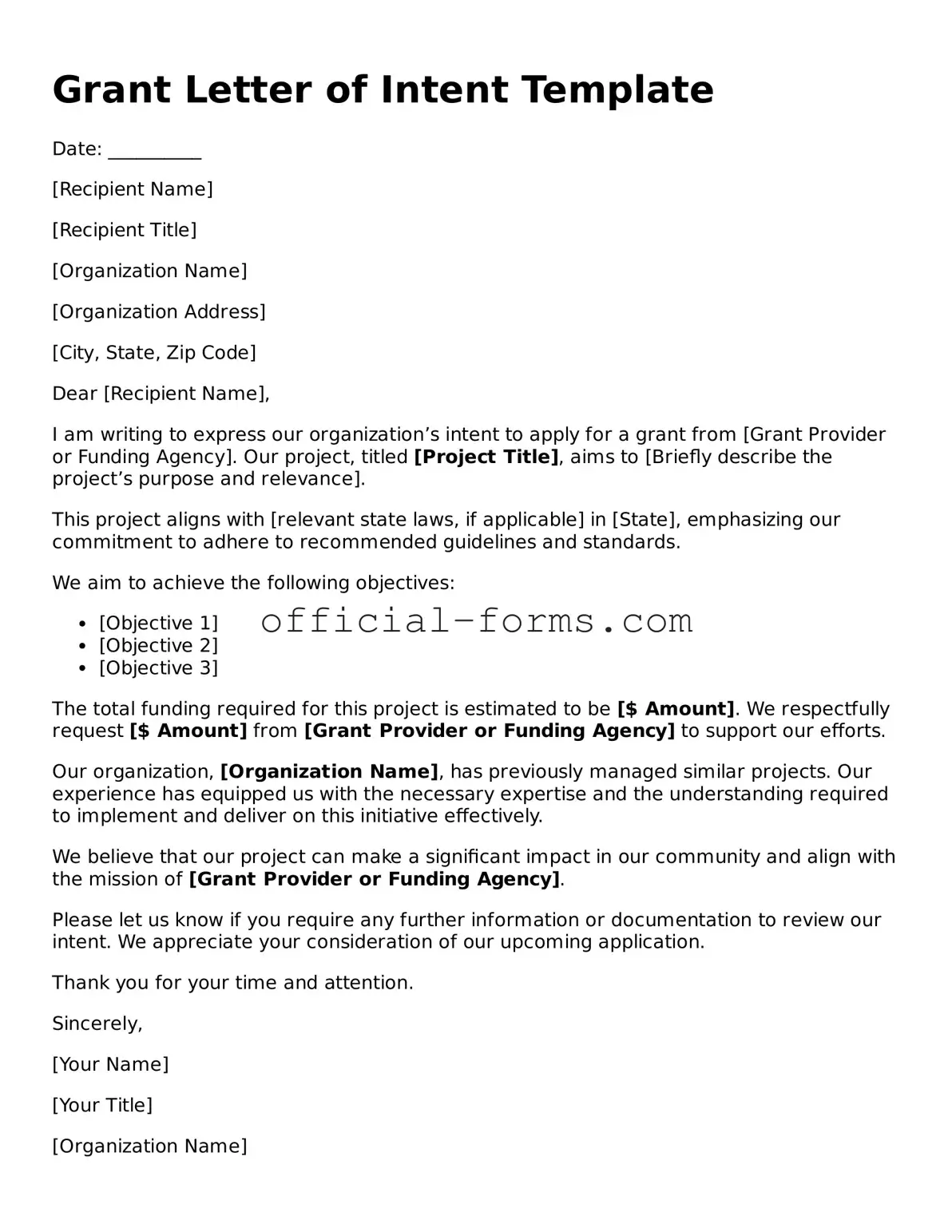When filling out a Grant Letter of Intent (LOI) form, applicants often overlook critical details that can impact their chances of success. One common mistake is failing to follow the specific guidelines set by the funding organization. Each grantor has its own requirements regarding format, length, and content. Ignoring these guidelines can lead to immediate disqualification.
Another frequent error is not clearly articulating the project’s goals. A vague or overly broad description can confuse reviewers. It is essential to be precise about what you intend to achieve and how it aligns with the grantor's mission. Clear, measurable objectives help convey the project's significance.
Many applicants also neglect to demonstrate the need for their project. Providing data or anecdotes that illustrate the problem being addressed strengthens the case for funding. Reviewers want to see evidence that the project will make a meaningful impact, so including relevant statistics or testimonials can be beneficial.
Additionally, some individuals fail to identify the target audience effectively. A well-defined target group helps grantors understand who will benefit from the project. Without this information, the proposal may lack focus and fail to resonate with reviewers.
Another mistake is underestimating the budget section. Applicants often provide vague estimates or fail to justify their expenses. A detailed budget that outlines costs and explains how funds will be allocated can enhance credibility and demonstrate financial responsibility.
Moreover, applicants sometimes forget to include necessary attachments or supporting documents. These materials can include resumes, letters of support, or evidence of previous successes. Omitting these documents can leave reviewers with unanswered questions about the applicant's qualifications.
Some individuals also overlook the importance of proofreading. Spelling and grammatical errors can create an impression of carelessness. A polished and professional document reflects well on the applicant and their organization.
In addition, applicants may fail to engage stakeholders early in the process. Involving community members or partners can provide valuable insights and strengthen the proposal. Collaborative projects often attract more attention from funders, as they demonstrate a broader impact.
Lastly, many people miss the deadline for submission. It is crucial to plan ahead and allow ample time for revisions and unexpected delays. Submitting on time is essential for consideration, and late applications are typically not accepted.
